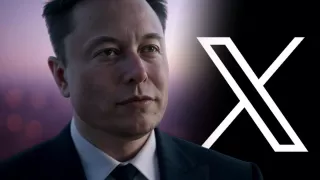Technology is expanding its horizons, and evolution continues to push boundaries to make the impossible happen. Among these innovations, Direct-To-Mobile Broadcasting (D2M) Technology stands out as the most innovative. This latest advancement has reshaped the dynamics of mobile content consumption for users. Previously, television presented our favorite movies and shows by capturing radio waves through antennas. Many local TV stations and media outlets utilized antennas to transmit signals, which were later converted into underground cables, satellites, or spacecraft. Currently, satellite dishes are commonly used, and in certain regions, OTT platforms (over-the-top services) have gained popularity. However, the internet has transformed this landscape, allowing anyone to access TV channel content on their phones.
Well, time has changed and this direct-to-mobile technology is under the development process. This D2M broadcasting will let you consume the content directly over phones without any use of an antenna or dishes or not even the internet. Doesn’t it seem quite innovative? Here in this blog, we have explored all the aspects of this latest direct-to-mobile broadcasting technology. So, let’s get started in learning the latest trend that can revolutionize the future of technology.
What is Direct to Mobile Broadcasting Technology

The direct-to-mobile broadcast or D2M technology simply refers to the convergence of broadband and broadcast technologies. This means smartphones can receive terrestrial digital TV, similar to how we listen to FM radios with a tap. Mobile phones can also receive multimedia content directly using D2M. Unlike traditional broadcasting methods, D2M technology enables seamless and instant data transmission, facilitating real-time interactions and engagement.
Furthermore, the core of D2M broadcasting technology operates on cutting-edge data compression algorithms and high-speed communication protocols. This capability allows for reduced latency when transmitting data (content). Additionally, D2M is currently leveraging the power of cloud computing and edge computing to optimize content delivery. This optimization aims to support a wide range of devices and network conditions simultaneously.
How does the Technology Work
The D2M technology functions in the manner similar to FM radio, where a receiver gets the transmitted signal. It is also similar to direct-to-home (DTH) broadcasting in which a dish antenna receives broadcast signals directly from satellites and transmits them to a receiver, also known as a set-top box.
In a paper titled 'D2M Broadcast 5G Broadband Convergence Roadmap for India', published by IIT Kanpur in 2022, it was noted that currently available mobile devices do not support D2M technology.
Working out the cost
Incorporating a separate baseband processing unit is expected to significantly increase smartphone costs and potentially impact the current architecture for LTE and 5G networks. The D2M network will operate in the 526MHz-582MHz band, requiring larger antennas that may pose integration challenges within the current smartphone design.
Massive Potential

The Ministry of Information and Broadcasting has especially pushed for D2M. It has argued that of the 280 million households in India, 190 million have television sets while the rest are TV dark. The number of smartphones stands at 800 million, alongside 250 million feature phones. D2M, therefore, provides a tremendous opportunity for the broadcast sector to reach every corner of the population, said Information and Broadcasting Secretary Apurva Chandra.
D2M could also be deployed to reduce the stress on telecom networks resulting from India’s burgeoning mobile data consumption that is set to reach 44.3 exabyte per month by 2024, he added. With 69 per cent of this data being video content, broadcasting a part of it through D2M will reduce the tremendous load on our 4G and 5G networks, he said.
Mobile phone manufacturers and telecom operators remain opposed to D2M
On Monday, the Cellular Operators Association of India (COAI) said spectrum allocation, network integration, and regulatory and cost arbitrage for D2M needs to be reevaluated. “Building a dedicated D2M network by earmarking spectrum specifically for the broadcasting infrastructure providing competing/complimentary services would lead to breach of level playing field,” it said.
A key point of contention would be spectrum. The proposed D2M network operates in the sub-GHz band (526 MHz-582 MHz). It is currently used by public broadcaster Prasar Bharati, along with many analogue, and digital terrestrial TV transmitters. It was decided in 2021 that the entire band of spectrum be shared between broadcasting services and D2M.
Subsequently, it was decided that 56 MHz of spectrum (472-526 MHz) would be sufficient for the deployment of D2M. But we now feel this entire 112 MHz spectrum needs to be reserved for D2M as of now,” Chandra stressed. However, COAI has called for a transparent auction of spectrum in the band, and a “technology-neutral approach with a focus on seamless integration into the existing mobile networks.
Also Read: Latest update of Ram mandir and controversial history























